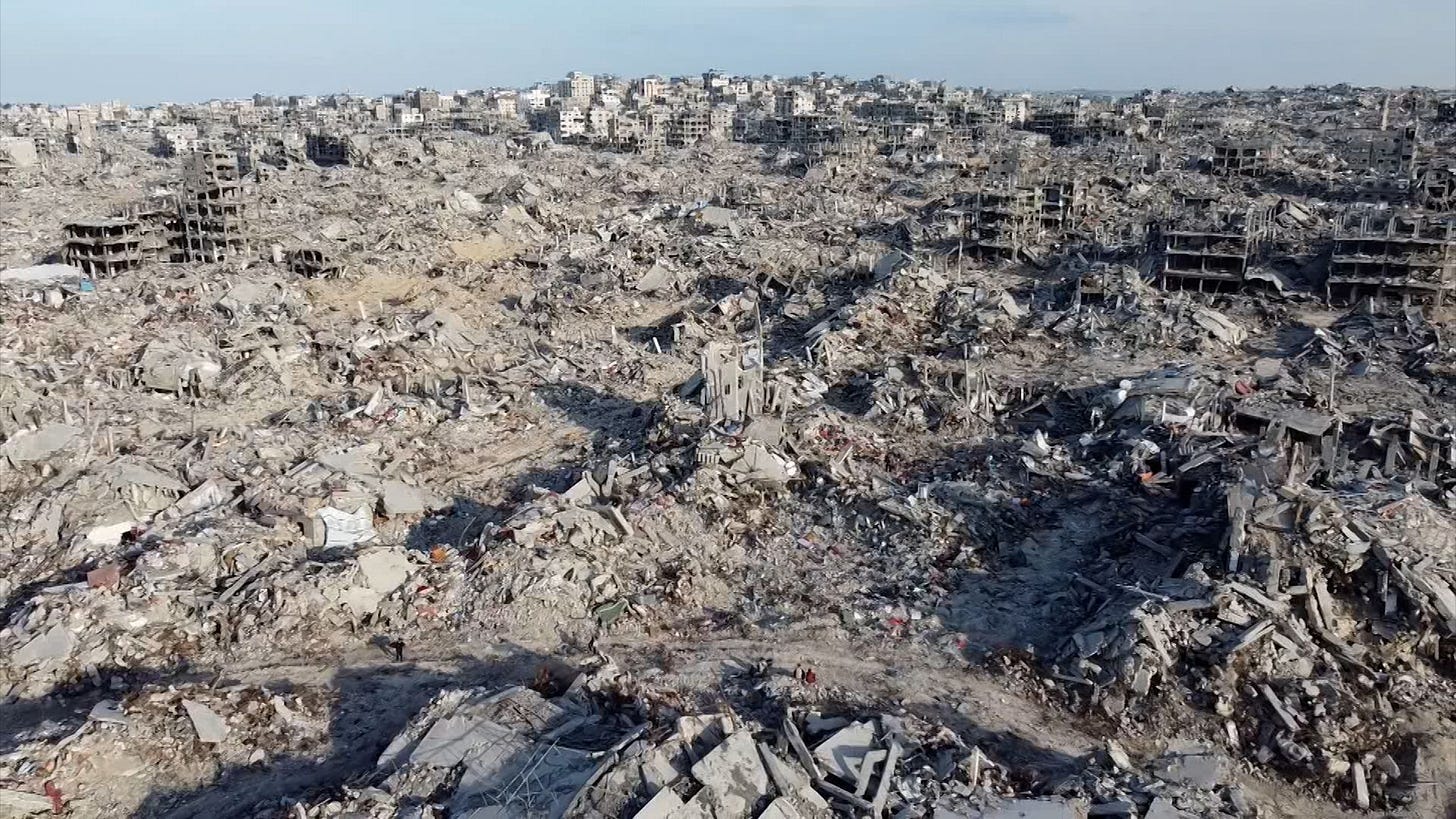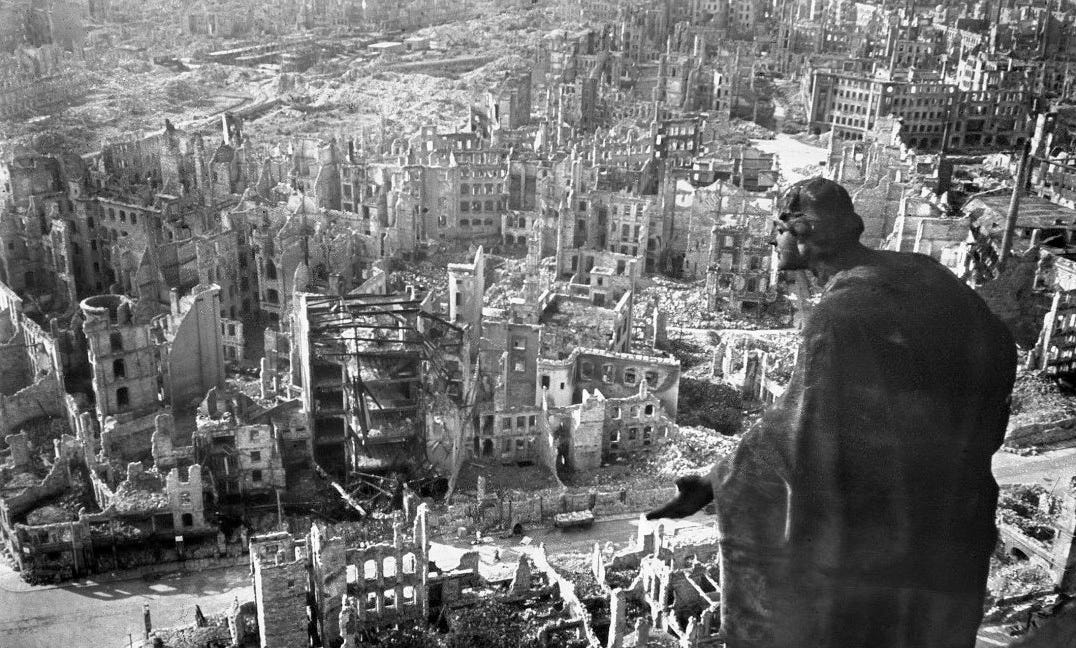Urban War for Dummies
A grown-up guide to Gaza, tunnels and human shields—without the fairy dust.
If idiocy counted as green energy, a single Greta Thunberg tweet would light Europe for a hundred years. Welcome to The Rise of the Idiots, where we catalogue the finest misunderstandings of our time—today’s entry: people who think urban warfare is a morality play performed in a quiet cul-de-sac with excellent Wi-Fi and a gluten-free catering truck.
The cold open (mind the splatter)
“Israel should just fight Hamas, but, you know, without upsetting anyone.”
Right. And I should run a marathon while sitting on my sofa, eating crisps, and pausing every mile to post a selfie about “my truth.”
The chorus keeps humming the same tune: “War should be tidy. Civilians should never be near fighters. Also, the fighters should not be close to civilians. Ideally, could they all meet in a field? Maybe with bunting.” These are the same people who think a ceasefire is a cheat code you can enter on a PlayStation controller: up-up-down-down-peace-peace.
Eyes on, not eyes closed
Here’s the adult version. A veteran British commander, Colonel Richard Kemp, has been in Israel since 9 October—not to collect Instagram reels of sirens, but to watch a real army fight a real enemy embedded in a real city. He’s studied this region for the UK government, sat in war rooms through every Gaza flare-up, and understands the difference between a slogan and a battle plan. He didn’t come for vibes; he came for facts. And like me, you don’t have to be Jewish to stand with Israel—or to keep your eyes open to facts.
How urban war actually works (spoiler: not like your favourite drama)
Urban war is a knife-fight in a crowd. The enemy doesn’t wear a hi-viz vest and queue politely. He tunnels under hospitals, launches from schools, stores weapons in flats, and turns a whole neighbourhood into a lethal booby-trap. He wants you to follow, because every metre you advance generates two kinds of shrapnel: concrete—and propaganda.
A professional military—yes, that includes the IDF—adapts with painstaking methods civilians rarely see: mapping, deconfliction, warnings, corridor creation, phased assaults, and more lawyers than you can shake a stick at. The “just be careful” brigade think they’ve said something profound. It’s like telling a neurosurgeon, “Hey, don’t wobble.”
Why Gaza Looks Leveled (What I Know)
Those aerial shots of flattened blocks get shoved in your face as “proof of genocide.” It’s stupid. Genocide is the extermination of people; photos of collapsed buildings tell you about construction materials, tunnelling, and booby-traps—not intent to murder civilians. Gaza’s grid was militarised: apartment towers doubled as access points into tunnel shafts; stairwells and corridors were seeded with chained IEDs; flats were converted into firing points and ammo stores. Under those conditions, “taking the building” means walking your soldiers into a purpose-built death maze. The honest, safer option is controlled demolition: you evacuate who you can, clear a perimeter, collapse the shafts, and deny the position so it can’t be used again tomorrow.
Plain-English cycle, minus the romance:
Find the hive. ISR, human intel, and ground contact indicate a tunnel mouth or weapons cache inside or beneath a block.
Warn and clear. Evacuation routes, messages, time windows. Sometimes it works; sometimes the enemy forces civilians to stay.
Test the box. Engineers probe for tripwires, pressure plates, and “daisy-chain” explosives primed to go sympathetic.
Choose life. Breaching into a wired kill-zone = coffins. Controlled demolition with combat engineers and heavy kit (yes, including D9s) = rubble instead of coffins, plus a sealed tunnel.
Prevent reuse. Collapse galleries, fill shafts, remove the position from tomorrow’s map.
That’s why whole blocks can go: interconnected tunnels run under multiple addresses; once one node blows, adjacent structures are compromised or rigged in series. Levelling stops the chain reaction being triggered against your troops a street away.
And please spare me the outrage theatre over rubble photography. Dresden looked like the surface of the moon in 1945. No one waved those pictures and cried, “Aha—legal proof of genocide!” The question is targeting and intent. In Gaza, the target set was the enemy’s embedded military infrastructure. The tragic civilian harm flowed from the enemy’s decision to turn civilian space into a fortress—not from some cartoon desire to smash buildings for fun.
Newsflash: the UK military actually knows this stuff
British soldiers are not confused by Gaza. They’ve fought similar enemies and terrain. They recognise the pattern, the tactics, the ethics, and the impossible trade-offs. Quietly, they also recognise something else: the UK benefits massively from Israeli know-how—armour protection that keeps British troops alive, anti-armour tech that stops our lads being turned into scrap, and intelligence links so close they probably qualify for couple’s therapy. The exchange is real, and we often get more than we give.
Our American cousins send generals to study Israel’s innovations like it’s a postgraduate seminar in staying alive. Britain should be doing the same in the open. Instead we whisper, terrified that learning from the most battle-tested Western-aligned force on the planet might make us look “too supportive.” Imagine shunning a first-rate medical school because the head surgeon is unpopular on Twitter.
Political theatre, now playing to a crowd near you
Here’s where the pageantry begins. British politicians stand at lecterns and purr, “Israel must take maximum precautions”—as if the IDF were casually lobbing ordnance for sport until Westminster discovered ethics last Thursday. The people saying that know better. We have attachés on the ground and detailed briefings at home. But gestures feed crowds. And crowds vote.
So we get talk of “partial arms embargoes” and sanctioning officials of a democratic ally currently fighting on multiple fronts. It’s not law. It’s electoral spreadsheets. And it’s dangerous, because every performative throat-clear in London echoes as permission in the heads of antisemites on UK streets.
Iran: the pretend line in the sand
Our leaders keep saying, “Iran must not get a nuclear weapon,” in the same tone you use to say “I must stop eating biscuits.” If they meant it, they’d help Israel remove the threat, not tut from the sidelines. An Iranian bomb doesn’t just endanger Israel; it sets the Middle East on a hair-trigger and puts Britain and Europe on a shorter fuse than a budget firework. This is the moment for backbone, not bromides.
Media: when the headline writes itself (and it always does)
Ask why genuine military expertise vanishes from British airwaves the minute Israel is the topic. A seasoned commander who’s been invited on for years suddenly becomes persona non grata—because he’s inconvenient to a cherished narrative. On the rare days he is allowed on, the “gotcha” isn’t about facts; it’s about identity. One presenter even tried the “You’re Jewish” angle as if that settles the argument. He isn’t. He replied he didn’t have the honour. And like me, you don’t have to be Jewish to stand with Israel—or to keep your eyes open to facts.
If you wonder why half the country now thinks a Hamas press release is breaking news, look at the editorial reflex: Israeli statements are “alleged,” terrorist claims are “reports,” and context is that thing we lost behind the sofa cushions.
The will to show up (and why it matters more than kit)
You don’t get through an urban crisis by ordering more gadgets; you get through it because grown-ups turn up. Picture the next “October 7th” here: some will suit up; others will book a wellness retreat; and a very loud subset will charter a dieselboat for a selfie-mission to “save Gaza,” live-streaming their virtue while the engine coughs black fumes across the Channel. Activism as cosplay: life jackets, GoPros, and not a clue.
Britain hasn’t run out of backbone; we’ve misplaced the instruction manual. The raw material’s there—smart, tough kids who can do hard things if they’re led like adults, not managed like brands. We don’t need chest-thumping; we need competence. We don’t need conscription; we need a story about service that doesn’t apologise for existing. Get that right and the line holds—practically and morally
Deterrence has a face: political will
Deterrence isn’t a gadget; it’s a message. It says: we will pay the price to stop you making us pay a worse one. Since 7 October, Israel’s leadership has shown the steadiness wars demand. You can dislike the man and still admit the method. Meanwhile, Western Europe rehearses for a future where NATO doesn’t fail with a bang but with a whimper—leaders unable to contemplate real losses, so they pre-compromise and call it wisdom.
The two-state bedtime story (expanded)
I know it’s catnip in London salons, but “two states, now” has become a lullaby for adults. Even before 7 October it failed on contact with reality: Israel would still have to retain hard security control to stop the next tunnel city, which means you don’t get a sovereign neighbour—you get Gaza 2.0 behind a new border. Gaza already answered the exam question: unilateral separation produced rockets, tunnels, and a massacre. Exporting that model to the West Bank doesn’t reduce risk; it multiplies it—shorter ranges, higher ground, more Israelis inside the threat ring.
There’s also the missing partner problem. Wanting something in Westminster doesn’t conjure it in Ramallah or Gaza City. You can call it “the solution” until your throat is sore; if the other side won’t accept a Jewish state beside them and won’t enforce monopoly on force, you’re not building peace—you’re building the next war with nicer stationery.
Back to basics: urban war ethics for grown-ups
Civilian shields are a war crime committed by the people using them, not by the army trying to reach the men hiding behind them.
Warnings don’t always work when your enemy forces civilians to stay.
Collateral damage is not “the plan”; it’s the horrible price of confronting those who made civilian death their plan.
If you want fewer civilian casualties, demand the enemy stop turning cities into fortresses.
These aren’t slogans. They’re the miserable parameters within which real soldiers operate while the social-media poets demand miracles from the cheap seats.
Why the West should say the quiet part out loud
Our governments know how the IDF actually fights. Our forces train with them. Our intelligence communities partner with them. Our kit is safer because of them. So say it. Not to be “pro-Israel,” but to be pro-truth and pro-Polish, pro-British, pro-American, pro-European—pro-Western. It would calm our streets, check our liars, and remind our enemies that we still recognise the difference between a shield and a sword.
Final beat: the idiots are rising—don’t let them set the script
Bad ideas rise when adults go quiet. If you want fewer bad ideas, turn the volume up on reality. Urban war is savage, constrained, and tragically necessary when your enemy chooses your neighbourhood as the battlefield. Israel didn’t write those rules. Hamas did. And Western countries—Britain included—either relearn how to tell that truth, or we’ll live to fight by those rules closer to home.
If this helped cut through the fog, consider supporting the project. I’m a filmmaker-activist operating without institutional backing and without a salary.
Every pound goes to production, research, security, and legal. Subscribe (free) or go paid to keep this work alive.




